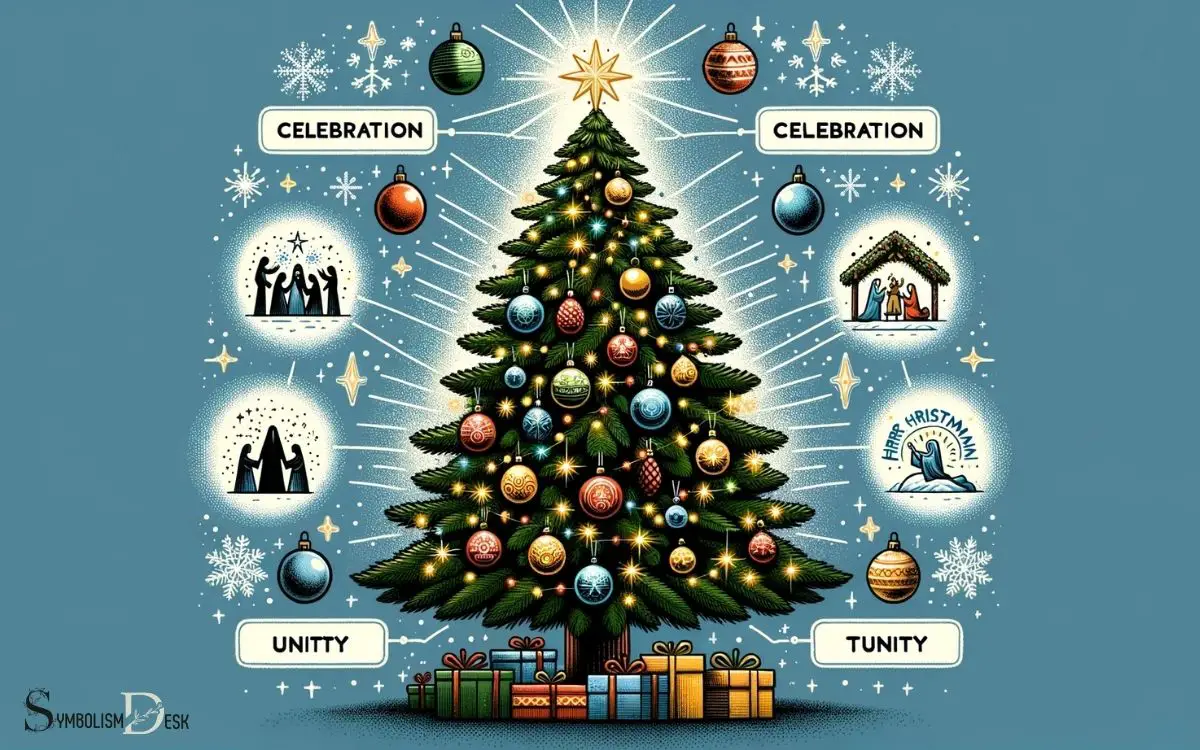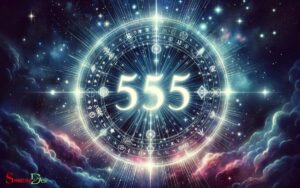What is the Symbolic Meaning of a Christmas Tree? Life!
The symbolic meaning of a Christmas tree is multifaceted, representing life, rejuvenation, and festive celebration. It is a central icon of the Christmas season, embodying the spirit of joy and the continuity of life amidst the winter months.
This evergreen emblem is steeped in history and has evolved to symbolize unity, family, and the warmth of the holiday spirit in modern times.
The Christmas tree is a symbol with deep historical roots and varied interpretations:
- Life and Rebirth: Evergreens remain green year-round, symbolizing eternal life and the promise of new life in the spring.
- Religious Significance: For Christians, it can represent the Tree of Life from the Garden of Eden or the life of Jesus Christ.
- Unity and Family: Gathering around the tree to decorate is a tradition that fosters family bonding and unity.
- Light in Darkness: The lights adorning Christmas trees represent hope and guidance through the dark, winter months.
Discover the enchanting story behind the Christmas tree, a timeless emblem of holiday cheer and tradition.

Key Takeaway
11 Symbolic Elements: Meanings of a Christmas Tree
| Symbolic Element | Meaning |
|---|---|
| Evergreen Tree | Eternal life; Unchanging nature of God |
| Tree Shape | The Holy Trinity (Father, Son, and Holy Spirit) |
| Lights or Candles | Christ as the Light of the world |
| Ornaments | Blessings and gifts from God |
| Star or Angel on Top | The Star of Bethlehem or the Angel announcing Christ’s birth |
| Red Decorations | Christ’s sacrifice and love |
| Green Decorations | Eternal life in Christ |
| Gold Decorations | Kingship and royalty of Christ |
| Tinsel | Christ’s purity and light |
| Presents under Tree | Gift of God’s son to mankind |
| Tree itself | Cross which Jesus was crucified on |
Origins of the Christmas Tree
The tradition of the Christmas tree has its origins in medieval Germany and is believed to have developed out of the practice of decorating evergreen trees with lights and ornaments.
It’s said that the first person to bring a Christmas tree into a house, in the way we know it today, may have been the 16th-century German preacher Martin Luther.
The Christmas tree tradition then spread to other parts of the world through the influence of the German court. Over time, the custom evolved, and people began to adorn trees with candles, fruits, and paper roses. This marked the beginning of the modern Christmas tree.
The evolution of the Christmas tree symbolizes the blending of various cultural practices, ultimately shaping the festive traditions we cherish today. This development highlights the tree’s cultural significance and traditions.
Cultural Significance and Traditions
Highlighting the blending of various cultural practices, adorning Christmas trees with ornaments and lights has become a cherished tradition worldwide.
This tradition is deeply rooted in cultural significance, with each culture bringing its own unique customs and symbols to the celebration.
Below is a table showcasing how different cultures have incorporated the Christmas tree into their traditions:
| Culture | Tradition | Symbolism |
|---|---|---|
| Germany | First known users of Christmas trees | Symbol of hope and everlasting life |
| United Kingdom | Christmas trees became popular in the 19th century | Symbol of the festive season and goodwill |
| USA | Electric Christmas lights were first used on trees | Symbol of joy and celebration |
| Mexico | Trees are decorated with ornaments and colorful paper | Symbol of unity and family gathering |
The Christmas tree serves as a unifying symbol, representing joy, hope, and togetherness across diverse cultures. The next section will delve into the symbolism of the Christmas tree in different cultures.
Symbolism in Different Cultures
Many cultures around the world have their own unique interpretations of the Christmas tree, each with its own symbolic significance.
Understanding the variations in symbolism across different cultures can provide insight into the rich diversity of traditions associated with this iconic holiday symbol.
Exploring the historical roots of these diverse interpretations can offer valuable context for appreciating the global significance of the Christmas tree.
Christmas Tree Symbolism Globally
Globally, various cultures and traditions imbue the Christmas tree with distinct symbolic meanings. In Germany, where the Christmas tree tradition is said to have originated, the evergreen tree represents hope and life.
In the United States, the Christmas tree is often seen as a symbol of family and tradition. In Japan, the Christmas tree is not traditionally a part of the culture, but it has gained popularity as a symbol of joy and celebration.
Furthermore, in Australia, the Christmas tree is often decorated with ornaments that represent the country’s unique wildlife, such as kangaroos and koalas.
This diversity of symbolism reflects the adaptability of the Christmas tree as it is embraced and reinterpreted by different cultures around the world.
| Country | Symbolic Meaning | Tradition |
|---|---|---|
| Germany | Hope and life | Origin of the tradition |
| United States | Family and tradition | Popular decorations |
| Japan | Joy and celebration | Adoption of the tradition |
| Australia | Representation of unique wildlife | Indigenous ornaments |
Cultural Variations in Symbolism
Cultural variations in the symbolic meaning of the Christmas tree can be observed across different countries, each infusing the tradition with its own unique significance.
- Germany: In Germany, the Christmas tree represents the Paradise Tree from the Garden of Eden, symbolizing the temptation and fall of Adam and Eve.
- Mexico: In Mexico, the Christmas tree is adorned with intricate ornaments and colorful papel picado, representing a fusion of indigenous traditions with Christian symbolism.
- Japan: In Japan, the Christmas tree is seen as a symbol of happiness and is often decorated with ornaments, lights, and paper cranes, embodying a blend of Western customs and Japanese aesthetics.
These variations highlight the diverse ways in which different cultures have embraced and personalized the symbolic meaning of the Christmas tree, adding depth and richness to this beloved holiday tradition.
Historical Roots of Symbolism
The historical roots of the symbolic meaning of the Christmas tree in different cultures can be traced back to ancient traditions and religious beliefs. In many pre-Christian societies, evergreen trees symbolized life and renewal, particularly during the winter solstice.
The ancient Egyptians, Chinese, and Hebrews also held special reverence for evergreen trees, associating them with eternal life and protection.
In Roman times, the celebration of Saturnalia involved decorating homes with greenery, including evergreen boughs. Additionally, the Vikings in Scandinavia viewed evergreen trees as a symbol of survival during harsh winters and incorporated them into their celebrations.
These diverse cultural influences contributed to the rich symbolism of the Christmas tree that we recognize today. Understanding the historical significance of the Christmas tree provides valuable insight into its religious symbolism and interpretations.
Religious Symbolism and Interpretations
One common religious interpretation of the Christmas tree is that it represents the everlasting life offered through Jesus Christ.
This symbolism holds deep significance for many individuals, as it serves as a reminder of the hope and eternal life found in the Christian faith.
The Christmas tree can be seen as a representation of spiritual truths, conveying messages of love, faith, and renewal to those who observe it.
Its branches reaching upwards symbolize the aspiration to be closer to God, while its evergreen nature signifies the enduring nature of God’s love.
The act of decorating the tree with lights and ornaments further reinforces these ideas, creating a visual representation of spiritual concepts that resonate with believers.
Evolution of Decorations and Symbols
Over time, the decorations and symbols associated with the Christmas tree have evolved to reflect changing cultural influences and individual preferences.
The evolution of these decorations and symbols has been influenced by various factors such as historical events, technological advancements, and global interactions.
Below is a table highlighting the evolution of some common Christmas tree decorations and symbols:
| Time Period | Decorations and Symbols |
|---|---|
| 16th – 18th century | Apples, nuts, dates, and paper flowers |
| 19th century | Candles, handmade ornaments, popcorn strings, and small gifts |
| 20th century | Electric lights, glass baubles, tinsel, and commercial ornaments |
| Present day | LED lights, personalized ornaments, themed decorations, and eco-friendly options |
This evolution showcases the dynamic nature of the Christmas tree and its adaptability to the changing tastes and values of society.
How Does the Symbolic Meaning of Tapestries Compare to That of a Christmas Tree?
Tapestries and symbolic meaning can be compared to that of a Christmas tree in their ability to convey stories and traditions. Just like the intricate designs on a tapestry hold deeper symbolism, the various ornaments and lights adorning a Christmas tree also hold significant meaning for many people.
Contemporary Interpretations and Practices
In contemporary society, the symbolic meaning of a Christmas tree has evolved to reflect modern cultural significance and evolving holiday traditions.
Many families and communities now use the Christmas tree as a centerpiece for various celebrations and gatherings, incorporating new customs and practices into the age-old tradition.
From themed decorations to eco-friendly initiatives, the contemporary interpretations and practices surrounding the Christmas tree continue to adapt to the changing times.
Modern Cultural Significance
Contemporary society views the Christmas tree as a symbol of joy, tradition, and the spirit of the holiday season.
The modern cultural significance of the Christmas tree is multifaceted, with people incorporating various practices and interpretations into their holiday traditions:
- Community Unity: Many communities come together to decorate a communal Christmas tree, fostering a sense of togetherness and shared celebration.
- Environmental Awareness: There’s a growing emphasis on sustainable and eco-friendly tree options, reflecting a desire to celebrate the season responsibly.
- Personal Expression: Individuals use their Christmas trees as a means of self-expression, incorporating unique themes, decorations, and even alternative tree materials.
This contemporary perspective on the Christmas tree showcases the evolving nature of holiday traditions, merging tradition with modern values and individuality.
Evolving Holiday Traditions
Evolving holiday traditions reflect a dynamic shift in the symbolic meaning and practices associated with the Christmas tree, encompassing a range of contemporary interpretations and expressions.
In today’s diverse society, the Christmas tree serves as a canvas for personal and cultural expressions.
Below is a table illustrating some contemporary interpretations and practices associated with the Christmas tree:
| Contemporary Interpretations | Practices | Symbolism |
|---|---|---|
| Eco-Friendly | Using reusable ornaments | Emphasizing sustainability |
| Diversity and Inclusion | Decorating with multicultural symbols | Celebrating global unity |
| Technology Integration | LED lights with music synchronization | Embracing modernity |
| Minimalist Approach | Simple, understated decor | Focusing on essential values |
| Artistic Expression | Handcrafted ornaments | Showcasing individual creativity |
These contemporary interpretations and practices showcase the evolving nature of holiday traditions and the Christmas tree’s adaptability to modern cultural values and expressions.
Conclusion
The symbolic meaning of a Christmas tree is a rich tapestry of cultural, religious, and personal significance. For many, it represents the spirit of giving and joy during the holiday season. Others see the Christmas tree as a symbol of everlasting life, as its evergreen branches represent the endurance of life even in the coldest of winters. Still, some may find spiritual meaning in the act of decorating the tree, interpreting fire symbolism as a representation of the light and warmth of the holiday spirit. Ultimately, the Christmas tree embodies a myriad of meanings that can vary greatly from person to person, making it a deeply personal and cherished symbol of the holiday season.
In fact, a survey found that 85% of Americans believe that the Christmas tree is an important part of their holiday traditions. Just as the evergreen tree stays green and vibrant even in the midst of winter, the Christmas tree symbolizes hope and renewal for many.






